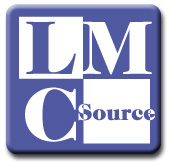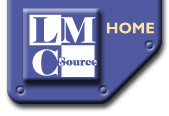 |
 |
 |
 |

The Savvy Seven Research Model
developed by Nancy Miller and Connie Champlin
- What is the Question?
- What Resources Should I Use?
- How Do I Find the Information?
- How Do I Gather the Information?
- Which Information Do I Use?
- How Do I Share What I Learned?
- How Do I Evaluate My Work?
Go beyond a topic or "factfinding" to create a "smart question", one that is essential, elaborating, probing or even irreverent. From this one overarching question, break your search into a few or several "investigative" questions. Identify what you already know and then choose keywords and phrases to use in your search for what you want to learn.
- What Resources Should I Use? ~ Look for quality primary and secondary sources of information (people, places, things, books, periodicals, images, video, etc.) in your school or other libraries, in the community and on the World Wide Web. Choose those resources that best suit your research question and that are accessible to you.
- How Do I Find the Information? ~ You need both "technical" and "thoughtful" literacy skills to find information within your identified resources. Your ability to conduct an interview, search through a catalog or index, use a computer, and access web portals or web search engines are greatly enhanced by also knowing how to scan for appropriate content, then expand or narrow your search through use of appropriate use of synonyms, antonyms and Boolean logic.
- How Do I Gather the Information? ~ Once you find potential information for your research, engage with it through reading, listening and viewing in more depth. This is the "first cut" process: If information is valuable to helping you answer your investigative questions, then capture it for later review. Take quality notes (paraphrase!); record audio or video; take photographs; download images, files and articles from web sources; or copy and paste text from web pages into a word processing document. Be sure to note citations (and/or make links) of your sources as you gather content.
- Which Information Do I Use?~ It is now time to critically examine the information gathered to determine its ultimate value to your research. Ask yourself: Is the content as current as it needs to be for the questions asked?; Is it from a valid and credible source?; What is the bias of the information source?; Is the information truly pertinent to the essential question or just somewhat related to the topic? At this point you must also determine if you have too much (choose the best, discard the rest), or not enough (search for more) quality information that you can legally use for your project.
- How Do I Share What I Learned? ~ Communicating what you have learned in your research is an important step even if you did the research just to inform yourself. You may have already determined the type of sharing product to create: a research paper, booklet, article, essay, website, speech, multimedia presentation, video, etc. In this stage you create the components that will comprise your finished product targeted to a specific audience. Organize the information by: rewriting it in your own words, creating tables and graphs of numeric data, adding captions to images, and then by synthesizing the relevant ideas in a cohesive manner and drawing defensible conclusions.
- How Do I Evaluate My Work? ~The evaluation stage of research should address both process and product. To judge the process, ask yourself: Was my research process thorough?. . .efficient?; How could I make it more thorough. . . more efficient?; Did I use a variety of appropriate primary and secondary sources? Assess the product according to assignment guidelines or a preestablished rubric, addressing such questions as: Is my product effective in answering the question?; Is it appropriate for the target audience?; Is it informative, persuasive, creative, entertaining?; Is my conclusion supported well by the evidence presented?; and, Has my information been attributed correctly?
Information Skill Lesson Plan or Unit Template
Developed by Connie Champlin & Nancy Miller
Academic Standard(s) addressed: List the standard(s) addressed in this lesson.
Topic: General topic or theme for this unit
Background (Introduction): This is where you describe the unit, including interdisciplinary connections and the context surrounding it. A general explanation or perhaps an Introduction the teacher may use to initiate the unit.
Goal(s): This is the general overall goal of this unit or lesson.
Specific Learning Objectives: List 2 or 3 specific learning objectives for this unit.
Resources: List resources that would be useful and their locations or access points, inc.URLs
Information Skill Integration: Indicate generally what this unit should address regarding information skills including any pre-requisite skills the students should have before undertaking this lesson. Check the Information skills that are addressed in the left column below.
|
Information Skill Addressed |
How will it be addressed? |
|
What is the Question? |
|
|
What Resources Should I Use? |
|
|
How Do I Find the Information? |
|
|
How Do I Collect the Information? |
|
|
How Do I Determine What to Use? |
|
|
How Do I Share What I Learned? |
|
|
How Do I Evaluate My Work? |
Assessment: How will you assess student achievement of the standard? How will you assess student information skills (process)? What worked well and what needs improvement about the lesson itself?
Classroom Teacher's Role: What preparatory, implementation and facilitation roles and tasks will the teacher take on for this project?
Teacher-Librarian's Role: What preparatory, implementation and facilitation roles and tasks will the library media specialist take on for this project?
Students' Role: What will the students' roles be in planning and carrying out this project?
Schedule and Activities: This is where you can describe in great detail the events that should occur throughout the unit.
Day 1: Location: Where this activity will take place
Describe the planned activity for this session.
Day 2: Location: Where this activity will take place
Description: Describe the planned activity for this session
Additional Notes:This might be the place to describe alternative resources or strategies that you would like to try the next time a similar project is undertaken or note particular conditions that made this successful or, conversely, troublesome.

